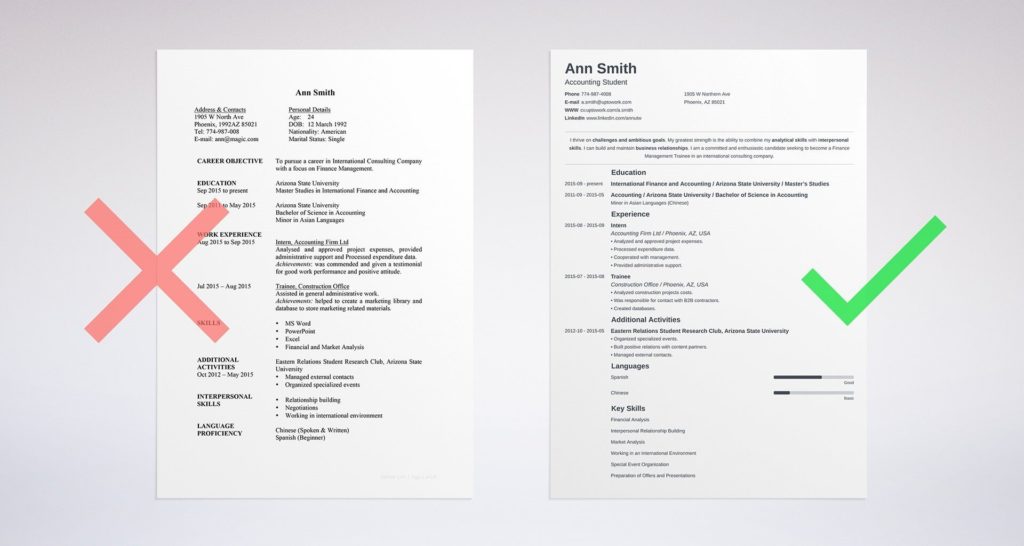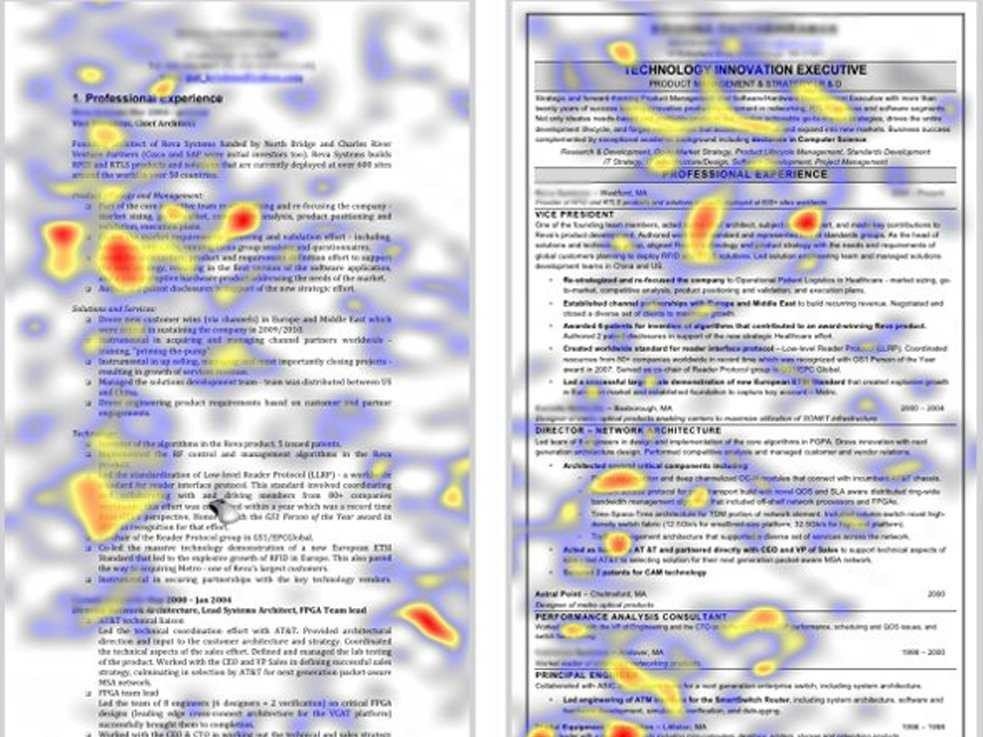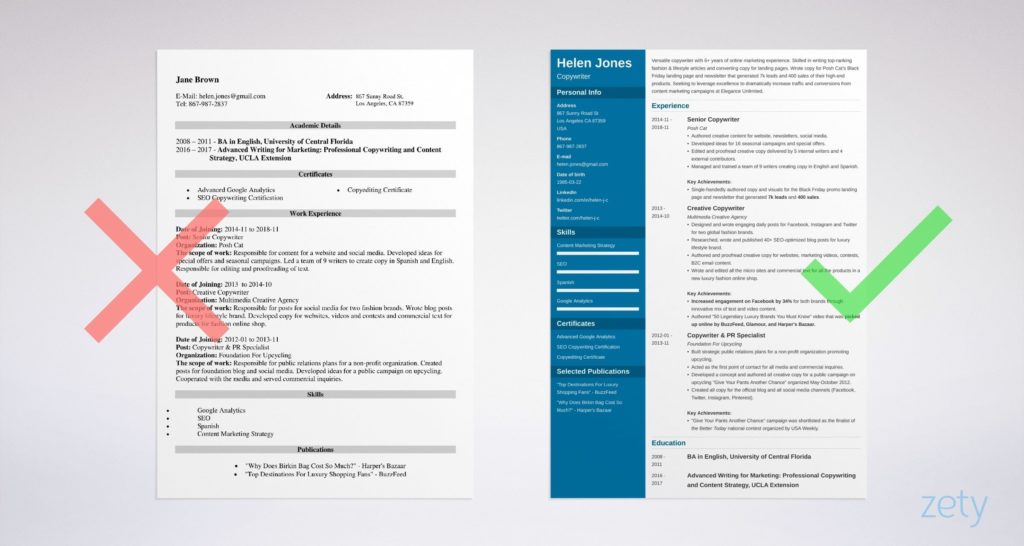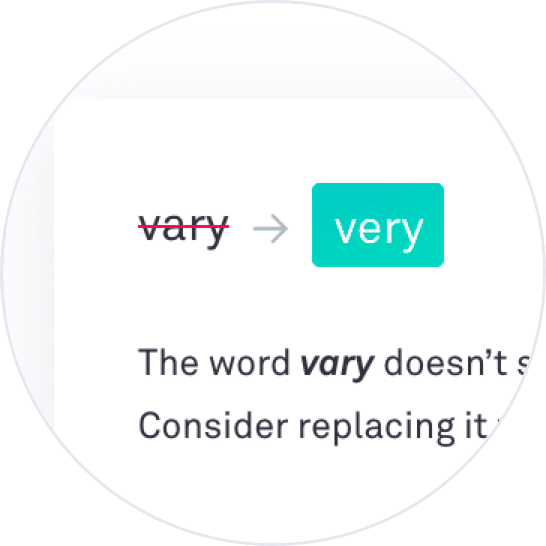
1. Create a professional email address.
Out of all of the resume building tips listed, this may seem too obvious. But it’s worth mentioning because the use of an unprofessional email address will get you rejected 76% of the time. So, if you haven’t already done so, ditch that email address you’ve been using since high school. Choose a professional email provider like Gmail or Outlook.
Use your name.
Right:
Wrong:
2. Set your font size to 10-12 points.
While choosing a font is important, making sure that it is the right size is paramount.
Keep your resume font size between 10-12 points so that a hiring manager can easily read it without squinting.
3. Consider using a professionally designed template.
Resume templates can save you a lot of time and effort. Imagine not having to fool around with margins in Word. Pick one out, and you’re ready to go.

4. Don’t Put Everything on There
Your resume should not have every work experience you’ve ever had listed on it. Think of your resume not as a comprehensive list of your career history, but as a marketing document selling you as the perfect person for the job. For each resume you send out, you’ll want to highlight only the accomplishments and skills that are most relevant to the job at hand (even if that means you don’t include all of your experience). Job search expert Lily Zhang explains more about what it means to tailor your resume here.
5. But Keep a Master List of All Jobs
Since you’ll want to be swapping different information in and out depending on the job you’re applying to, keep a resume master list on your computer where you keep any information you’ve ever included on a resume: old positions, bullet points tailored for different applications, special projects that only sometimes make sense to include. Then, when you’re crafting each resume, it’s just a matter of cutting and pasting relevant information together. Think of this as your brag file.
6. Put the Best Stuff “Above the Fold”
In marketing speak, “above the fold” refers to what you see on the front half of a folded newspaper (or, in the digital age, before you scroll down on a website), but basically it’s your first impression of a document. In resume speak, it means you should make sure your best experiences and accomplishments are visible on the top third of your resume. This top section is what the hiring manager is going to see first—and what will serve as a hook for someone to keep on reading. So focus on putting your best, most relevant experiences first—and then check out these five other marketing tricks to get your resume noticed.
7. Ditch the Objective Statement
According to Zhang, the only occasion when an objective section makes sense is when you’re making a huge career change and need to explain from the get-go why your experience doesn’t match up with the position you’re applying to. In every other case? Consider whether a summary statement would be right for you—or just nix it altogether to save space and focus on making the rest of your resume stellar.

8. Keep it (Reverse) Chronological
There are lots of different ways to organize the information on your resume—like the functional resume or combination resume—but the good old reverse chronological (where your most recent experience is listed first) is still your best bet. Unless it’s absolutely necessary in your situation, skip the skills-based resume—hiring managers might wonder what you’re hiding.
9. Keep it to a Page
The two- (or more!) page resume is a hotly debated topic, but the bottom line is this—you want the information here to be concise, and making yourself keep it to one page is a good way to force yourself to do this. If you truly have enough relevant and important experience, training, and credentials to showcase on more than one page of your resume, then go for it. But if you can tell the same story in less space? Do. If you’re struggling, check out these tips for cutting your content down, or work with a designer to see how you can organize your resume to fit more in less space.

10. Consider an Online Supplement
Can’t figure out how to tell your whole story on one page, or want to be able to include some visual examples of your work? Instead of trying to have your resume cover everything, cover the most important details on that document, and then include a link to your personal website, where you can dive more into what makes you the ideal candidate.
11. Keep it Simple
We’ll talk about getting creative in order to stand out in a minute. But the most basic principle of good resume formatting and design? Keep it simple. Use a basic but modern font, like Helvetica, Arial, or Century Gothic. Make your resume easy on hiring managers’ eyes by using a font size between 10 and 12 and leaving a healthy amount of white space on the page. You can use a different font or typeface for your name, your resume headers, and the companies for which you’ve worked, but keep it simple and keep it consistent. No matter what resume format you choose, your main focus here should be on readability for the hiring manager. That being said, you should feel free to…

12. Carefully Stand Out
Really want your resume stand out from the sea of Times New Roman? Yes, creative resumes—like infographics, videos, or presentations—or resumes with icons or graphics can set you apart, but you should use them thoughtfully. If you’re applying through an ATS, keep to the standard formatting without any bells and whistles so the computer can read it effectively. If you’re applying to a more traditional company, don’t get too crazy, but feel free to add some tasteful design elements or a little color to make it pop. No matter what, don’t do it unless you’re willing to put in the time, creativity, and design work to make it awesome.
13. Make Your Contact Info Prominent
You don’t need to include your address on your resume anymore (really!), but you do need to make sure to include a phone number and professional email address (not your work address!) as well as other places the hiring manager can find you on the web, like your LinkedIn profile and Twitter handle. (Implicit in this is that you keep these social media profiles suitable for prospective employers.)
14. Design for Skimmability
You’ve heard before that hiring managers don’t spend a lot of time on each individual resume. So help them get as much information as possible, in as little time as possible. These 12 small formatting changes will make a huge difference.
15. Get Help From a Professional
Know that design skills aren’t your strong suit but want your resume to look stunning? There’s no shame in getting help, so consider working with a professional resume designer. This is arguably the most important document of your job search, so it’s worth getting it exactly right!
16. Keep it Recent, Keep it Relevant
As a rule, you should only show the most recent 10-15 years of your career history and only include the experience relevant to the positions to which you are applying. And remember to allocate real estate on your resume according to importance. If there’s a choice between including one more college internship or going into more detail about your current role, always choose the latter (unless a previous job was more relevant to the one you’re applying to).
17. No Relevant Experience? No Worries!
Don’t panic if you don’t have any experience that fits the bill. Instead, Zhang explains, focus your resume on your relevant and transferrable skills along with any related side or academic projects, and then make sure to pair it with a strong cover letter telling the narrative of why you’re ideal for the job.
18. Curate Your Bullet Points
No matter how long you’ve been in a job, or how much you’ve accomplished there, you shouldn’t have more than five or six bullets in a given section. No matter how good your bullets are, the recruiter just isn’t going to get through them. Check out these tips for writing impressive bullet points.
19. Bring it Down a Level
You may be tempted to throw in tons of industry jargon so you sound like you know what you’re talking about, but ultimately you want your resume to be understandable to the average person. Remember that the first person who sees your resume might be a recruiter, an assistant, or even a high-level executive—and you want to be sure that it is readable, relevant, and interesting to all of them.
20. Give ’Em the Numbers
Use as many facts, figures, and numbers as you can in your bullet points. How many people were impacted by your work? By what percentage did you exceed your goals? By quantifying your accomplishments, you really allow the hiring manager to picture the level of work or responsibility you needed to achieve them. Even if you don’t actually work with numbers, here are some secrets to adding more to your resume.
21. Take it One Step Further
People hire performers, so you want to show that you didn’t just do stuff, but that you got stuff done! As you look at your bullet points, think about how you can take each statement one step further and add in what the benefit was to your boss or your company. By doing this, you clearly communicate not only what you’re capable of, but also the direct benefit the employer will receive by hiring you. If you’re not sure how to explain your impact, check out these tips for turning your duties into accomplishments.
22. Show—Don’t Tell—Your Soft Skills
Describing soft skills on a resume often starts to sound like a list of meaningless buzzwords, fast. But being a “strong leader” or an “effective communicator” are important characteristics you want to get across. Think about how you can demonstrate these attributes in your bullet points without actually saying them. Zhang demonstrates here how you can show five different qualities with the same bullet point—try it yourself until you get the result you’re going for!

23. Don’t Neglect Non-Traditional Work
There’s no law that says you can only put full-time or paid work on your resume. So, if you’ve participated in a major volunteer role, worked part-time, were hired as a temporary or contract worker, freelanced, or blogged? Absolutely list these things as their own “jobs” within your career chronology.
24. Mix Up Your Word Use
If every bullet in your resume starts with “Responsible for,” readers will get bored very quickly. Use our handy list of better verbs to mix it up!
25. Use Keywords
Use keywords in your resume: Scan the job description, see what words are used most often, and make sure you’ve included them in your bullet points. Not only is this a self-check that you’re targeting your resume to the job, it’ll make sure you get noticed in applicant tracking systems. Stuck on which words to include? Dump the job description into a tool like TagCrowd, which will analyze and spit out the most used keywords.
26. Avoid Empty Words
What words shouldn’t you include? Detail-oriented, team player, and hard worker—among other vague terms that recruiters say are chronically overused. We bet there’s a better way to describe how awesome you are.
27. Experience First, Education Second
Unless you’re a recent graduate, put your education after your experience. Chances are, your last couple of jobs are more important and relevant to you getting the job than where you went to college.
28. Also Keep it Reverse Chronological
Usually, you should lay down your educational background by listing the most recent or advanced degree first, working in reverse chronological order. But if older coursework is more specific to the job, list that first to grab the reviewer’s attention.
29. But Skip the Dates
Don’t list your graduation dates. The reviewer cares more about whether or not you have the degree than when you earned it.
30. Highlight Honors, Not GPA
If you graduated from college with high honors, absolutely make note of it. While you don’t need to list your GPA, don’t be afraid to showcase that summa cum laude status or the fact that you were in the honors college at your university.
31. Include Continuing or Online Education
Don’t be afraid to include continuing education, professional development coursework, or online courses in your education section, especially if it feels a little light. Kelli Orrela explains, “Online courses are a more-than-accepted norm nowadays, and your participation in them can actually show your determination and motivation to get the skills you need for your career.”
32. List Out Your Skills
Be sure to add a section that lists out all the relevant skills you have for a position, including tech skills like HTML and Adobe Creative Suite and any industry-related certifications. Just make sure to skip including skills that everyone is expected to have, like using email or Microsoft Word. Doing so will actually make you seem less technologically savvy.
33. Divvy Them Up
If you have lots of skills related to a position—say, foreign language, software, and leadership skills—try breaking out one of those sections and listing it on its own. Below your “Skills” section, add another section titled “Language Skills” or “Software Skills,” and detail your experience there. Again—we’re going for skimmability here, folks!
34. Show Some Personality
Feel free to include an “Interests” section on your resume, but only add those that are relevant to the job. Are you a guitar player with your eye on a music company? Definitely include it. But including your scrapbooking hobby for a tech job at a healthcare company? Don’t even think about it.
35. Beware of Interests That Could Be Controversial
Maybe you help raise money for your church on the reg. Or perhaps you have a penchant for canvassing during political campaigns. Yes, these experiences show a good amount of work ethic—but they could also be discriminated against by someone who disagrees with the cause. Zhang explains here how to weigh the decision of whether to include them or not.
36. Strut Your Stuff
Do include awards and accolades you’ve received, even if they’re company-specific awards. Just state what you earned them for, e.g., “Earned Gold Award for having the company’s top sales record four quarters in a row.” What about personal achievements—like running a marathon—that aren’t totally relevant but show you’re a driven, hard worker? Zhang shares the proper ways to include them.
37. Kill the Short-Term Jobs
If you stayed at a (non-temporary) job for only a matter of months, consider eliminating it from your resume. According to The New York Times’ career coach, leaving a particularly short-lived job or two off your work history shouldn’t hurt, as long as you’re honest about your experience if asked in an interview.
38. Deal with the Gaps
If you have gaps of a few months in your work history, don’t list the usual start and end dates for each position. Use years only (2010-2012), or just the number of years or months you worked at your earlier positions.
39. Explain Serial Job Hopping
If you’ve job-hopped frequently, include a reason for leaving next to each position, with a succinct explanation like “company closed,” “layoff due to downsizing,” or “relocated to new city.” By addressing the gaps, you’ll proactively illustrate the reason for your sporadic job movement and make it less of an issue
40. Explain a Long Break in Jobs
Re-entering the workforce after a long hiatus? This is the perfect opportunity for a summary statement at the top, outlining your best skills and accomplishments. Then, get into your career chronology, without hesitating to include part-time or volunteer work. See more tips from Jenny Foss for killing it on your comeback resume.
41. Don’t Try to Get Cute
Don’t try to creatively fill in gaps on your resume. For example, if you took time out of the workforce to raise kids, don’t list your parenting experience on your resume, à la “adeptly managed the growing pile of laundry” (we’ve seen it). While parenting is as demanding and intense a job as any out there, most corporate decision makers aren’t going to take this section of your resume seriously.
42. Ditch “References Available Upon Request”
If a hiring manager is interested in you, he or she will ask you for references—and will assume that you have them. There’s no need to address the obvious (and doing so might even make you look a little presumptuous!).
43. Proofread, Proofread, Proofread
It should go without saying, but make sure your resume is free and clear of typos. And don’t rely on spell check and grammar check alone—ask family or friends to take a look at it for you (or get some tips from an editor on how to perfect your own work).
44. Save it as a PDF
If emailing your resume, make sure to always send a PDF rather than a .doc. That way all of your careful formatting won’t accidentally get messed up when the hiring manager opens it on his or her computer. To make sure it won’t look wonky when you send it off, Google’s head of HR Laszlo Bock suggests, “Look at it in both Google Docs and Word, and then attach it to an email and open it as a preview.”
45. Name Your File Smartly
Ready to save your resume and send it off? Save it as “Jane Smith Resume” instead of “Resume.” It’s one less step the hiring manager has to take.
46. Constantly Refresh It
Carve out some time every quarter or so to pull up your resume and make some updates. Have you taken on new responsibilities? Learned new skills? Add them in. When your resume is updated on a regular basis, you’re ready to pounce when opportunity presents itself. And, even if you’re not job searching, there are plenty of good reasons to keep this document in tip-top shape.
47. Match your cover letter to your resume.
The two best cover letter tips are:
- Write a cover letter.
- Match the content of your cover letter to your resume.
Yes, you still need to write cover letters. And yes, they need to match your resume so that you’re telling the hiring manager one cohesive story. If there was something you feel needs an explanation, write about it in your cover letter
48. Run your job description and resume through a cloud generator.
Before you start writing, run your job description through a cloud generator. Which words are the most prominent?
You can use the words that appear as a content guide while writing your resume. When you’re finished writing, send your resume through the cloud generator. Do the same words appear?
A cloud generator is a quick way to check that you’ve tailored your resume to meet the needs of the hiring manager.
49. Tailor your resume to the job description
Tailoring your resume is probably the king of resume tips. If you do nothing else, tailor your resume to the job description. You do that by identifying keyword skills in the offer and then add these skills throughout your resume. It sounds like a lot of work, but these keywords are what you should put on your resume above all else.
That’s because keywords are what hiring managers are looking for when they scan your resume.
50. Use a proofreading tool like Grammarly
You cannot afford to have typos or grammar errors in your resume. The majority (61%) of recruiters will throw out a resume immediately if they see typos. Microsoft Word or Google Docs will do a good job of detecting spelling errors, but the Grammarly app or Language Tool will catch grammar mistakes and typos.
You need to proofread your resume before sending your resume, and an app will help you catch things you can’t see.

